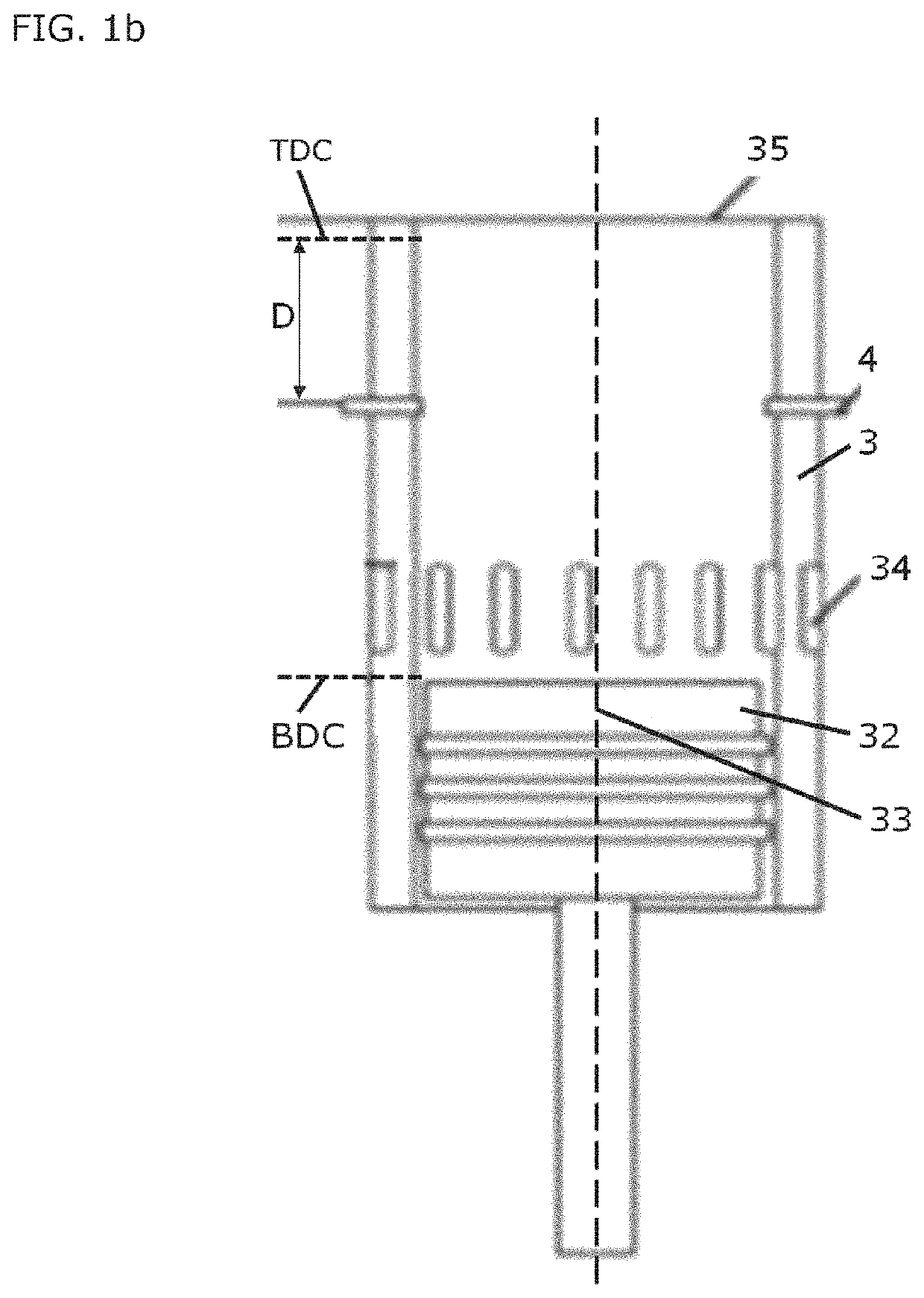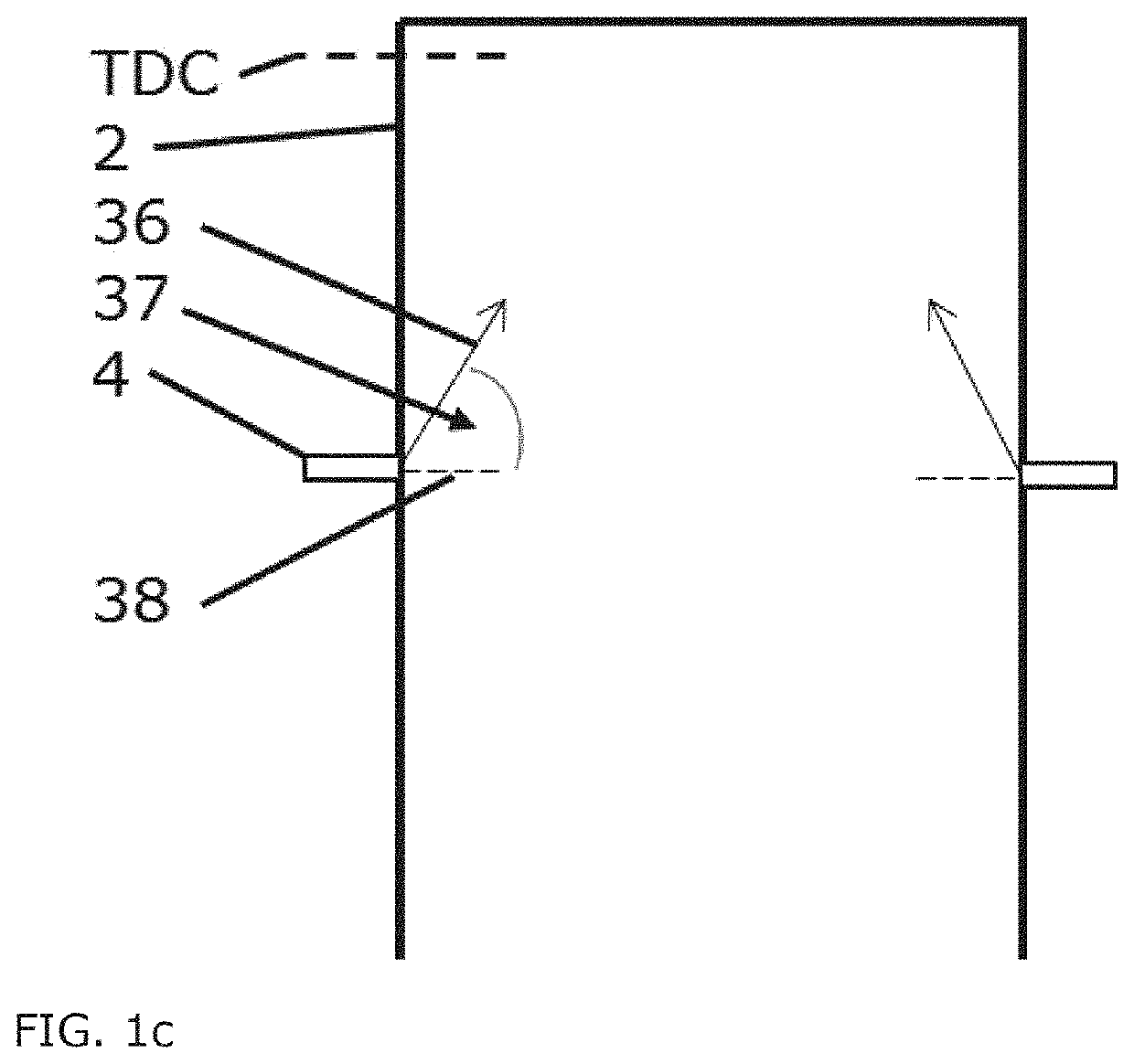Large slow-running two-stroke engine with sip lubricant injector
a two-stroke engine and injector technology, applied in the direction of pressure lubrication, lubrication elements, cylinders, etc., can solve the problems of not being able to reposition the oil quill lubrication valve, the consideration of sip lubrication principles cannot be applied to lubricant sprays, and the oil not being scrapped into the combustion chamber
- Summary
- Abstract
- Description
- Claims
- Application Information
AI Technical Summary
Benefits of technology
Problems solved by technology
Method used
Image
Examples
Embodiment Construction
[0052]FIG. 1a illustrates one half of a cylinder of a large slow-running two-stroke engine, for example marine diesel engine. The cylinder 1 comprises a cylinder liner 2 on the inner side of the cylinder wall 3. Inside the cylinder wall 3, there are provided a plurality of lubricant injectors 4 distributed along a circle with identical angular distance between adjacent injectors 4. The injectors 4 receive lubrication oil from a lubricator pump and controller system 11 through lubrication supply lines 9. The supplied oil is typically heated to a specific temperature, for example 50-60 degrees. Some of the lubricant is returned to the pump by lubricant return lines 10. The lubricator pump and controller system 11 supplies pressurised lubrication oil to the injectors 4 in precisely timed pulses, synchronised with the piston motion in the cylinder 1 of the engine. For the synchronisation, the lubricator pump and controller system 11 comprises a computer that monitors parameters for the ...
PUM
 Login to View More
Login to View More Abstract
Description
Claims
Application Information
 Login to View More
Login to View More - R&D
- Intellectual Property
- Life Sciences
- Materials
- Tech Scout
- Unparalleled Data Quality
- Higher Quality Content
- 60% Fewer Hallucinations
Browse by: Latest US Patents, China's latest patents, Technical Efficacy Thesaurus, Application Domain, Technology Topic, Popular Technical Reports.
© 2025 PatSnap. All rights reserved.Legal|Privacy policy|Modern Slavery Act Transparency Statement|Sitemap|About US| Contact US: help@patsnap.com



